
What Is a Portafilter in an Espresso Machine? A Simple Guide
|
|
Time to read 8 min
Your Cart
Your cart
|
|
Time to read 8 min
We spend a lot of time thinking about the espresso shot, the flavor, the crema, the temperature, and the machine. But what often gets overlooked are the smaller parts that play a big role in making it all happen. One of those is the portafilter.
It's the tool you lock into the espresso machine, usually with a handle and a small metal basket. It might look like a simple add-on, but it’s responsible for holding the grounds in place and making sure water flows through them correctly. In short, it's central to how your espresso turns out, including taste, aroma, and consistency.
In this guide, we’re going to break down what a portafilter does, the different types available, and the components that make it work. So, if you have ever looked at that little pot and never really thought twice about it, this one’s for you.
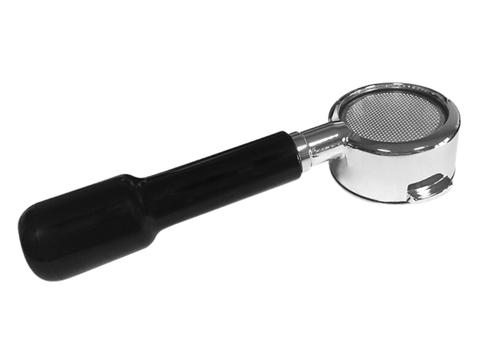
A portafilter is the handled component you attach to the group head of an espresso machine. It holds the ground coffee during extraction. It comes with a small metal basket that you fill, tamp, and lock into place before brewing begins. As simple as it looks, the portafilter is central to preparing espresso. It’s responsible for creating the pressure environment needed to force hot water through finely ground coffee, which results in the concentrated shot we call espresso. Its shape, weight, and build also affect consistency, flow, and water distribution. Whether you're working with a home setup or running a commercial machine, the portafilter directly influences flavour, extraction balance, and the reliability of each shot.
Holds and stabilizes the coffee grounds during high-pressure extraction without disrupting the puck.
Supports even water distribution through a tight, compressed bed of grounds, avoiding over- or under-extraction.
Maintains consistent temperature and pressure at the contact point between the machine and the coffee.
Allows for different basket sizes, which affects yield and strength depending on whether you're making single, double, or triple shots.
Plays a role in workflow efficiency, especially in commercial setups where multiple shots are pulled back-to-back.
Enables visual quality checks (especially with bottomless portafilters), helping baristas spot channelling or uneven tamping instantly.
Now that we know what a portafilter does and why it matters, let’s look at what it’s made of. Each part contributes to how well it performs and how consistent your espresso turns out.
A portafilter may seem like a single unit, but it’s made up of a few essential parts. Each of these plays a role in how your espresso is brewed and how easy it is to maintain your equipment.
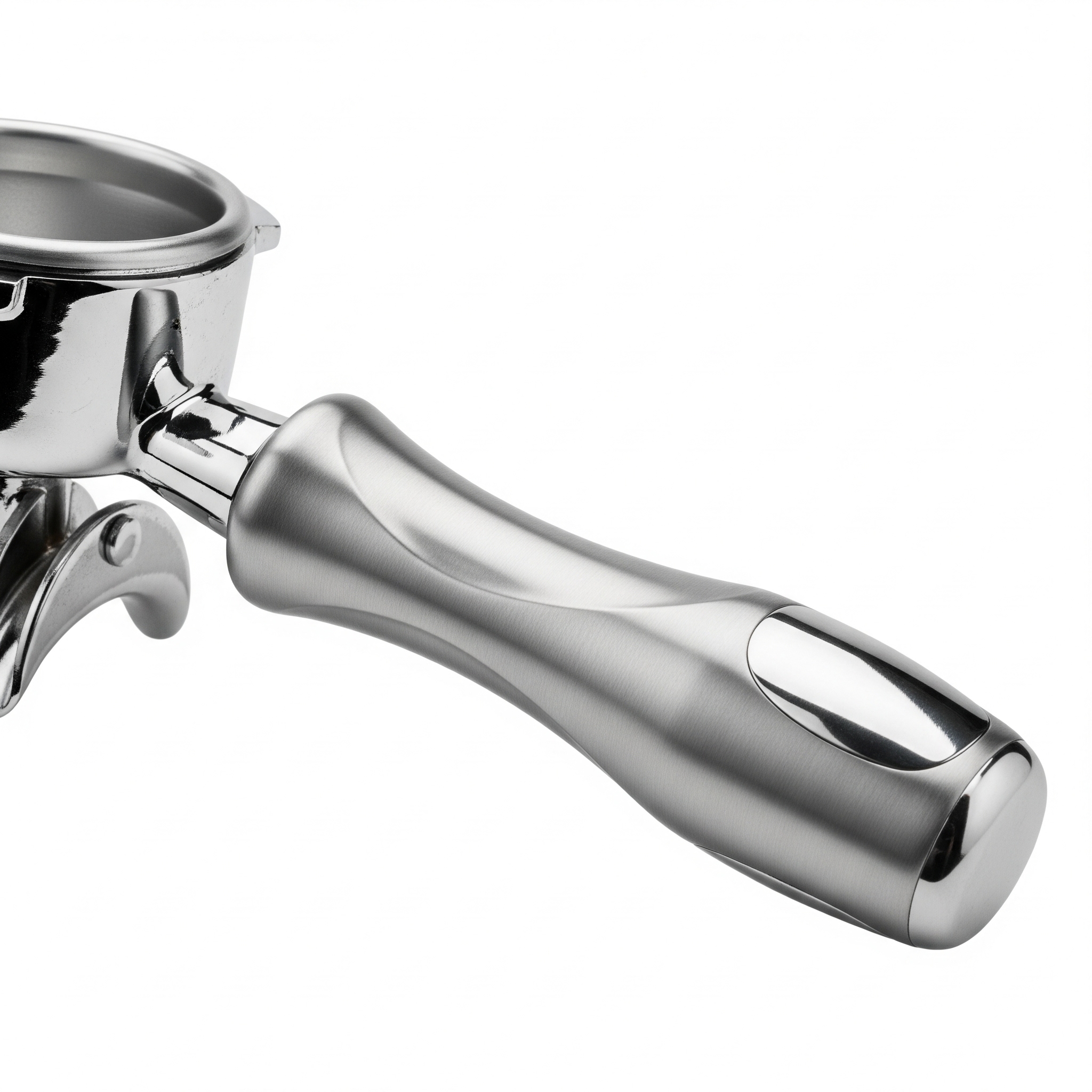
The most visible part is designed for grip and balance. Good handles are heat-resistant and ergonomically shaped so they’re comfortable to hold, even during a long barista shift.
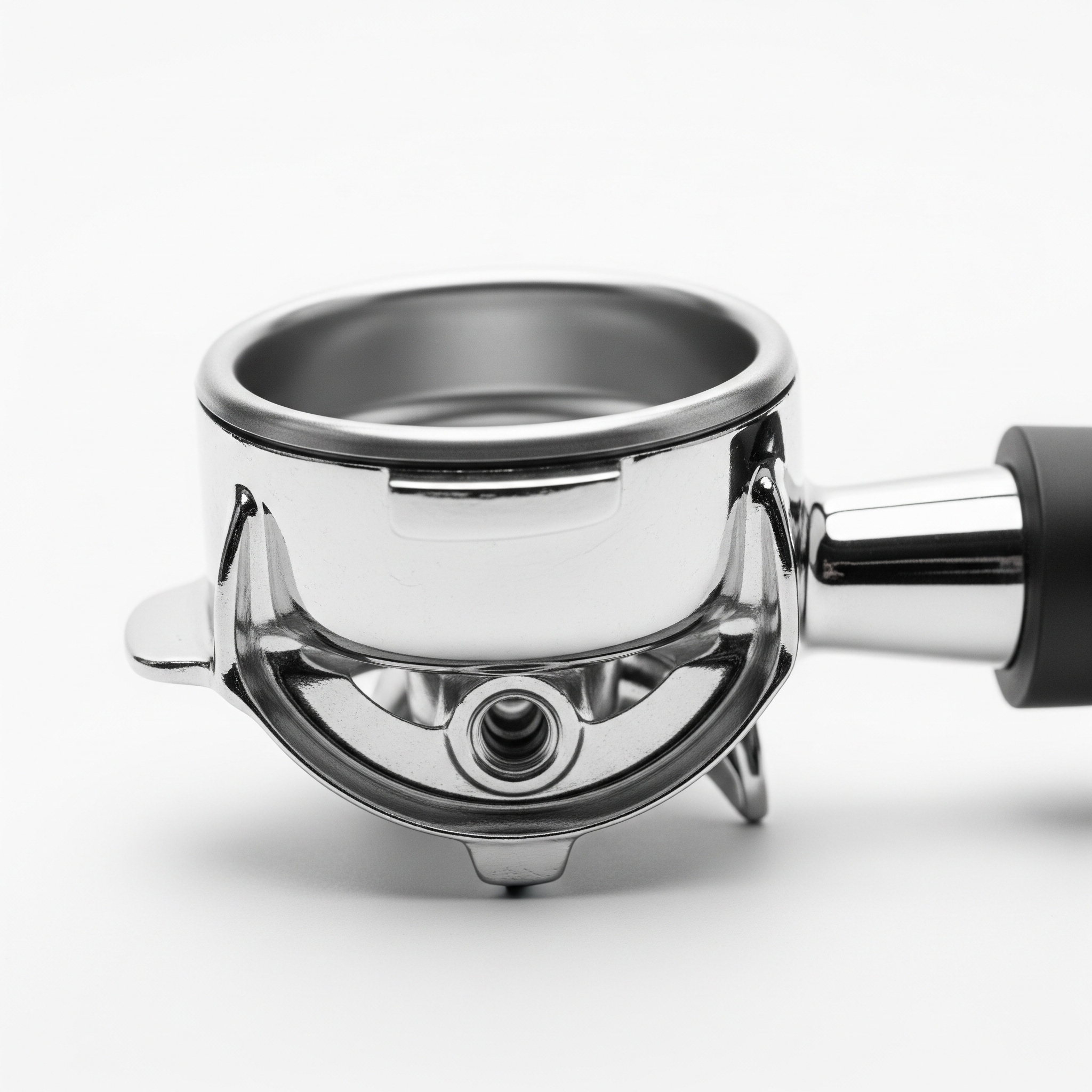
This metal part connects to the machine and holds the basket. Usually made from brass or stainless steel, it helps retain heat and supports consistent extraction.
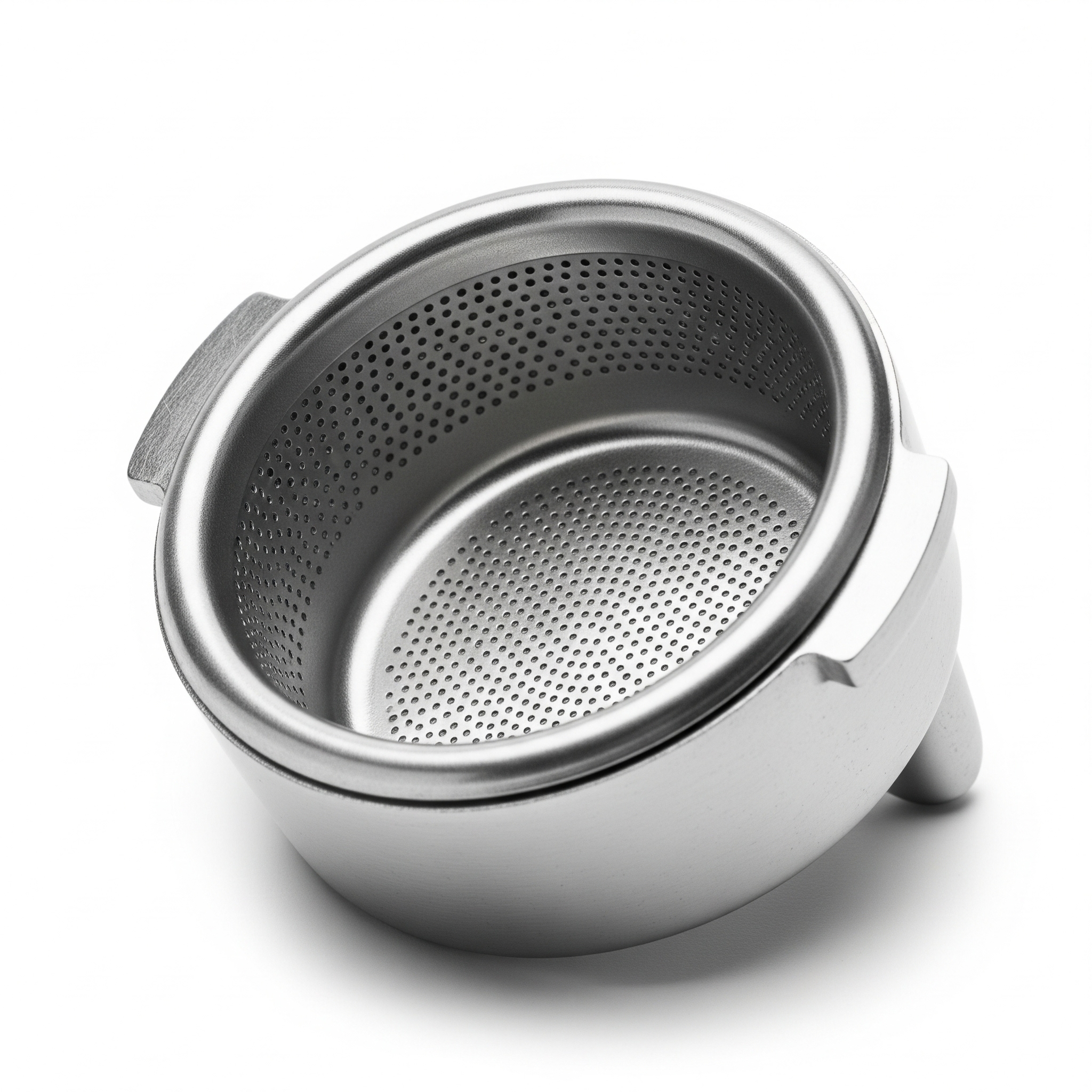
A removable metal cup where ground coffee goes. Baskets come in different sizes (single, double, triple) and styles (pressurised or non-pressurised), depending on how much coffee you're brewing and how much control you want.
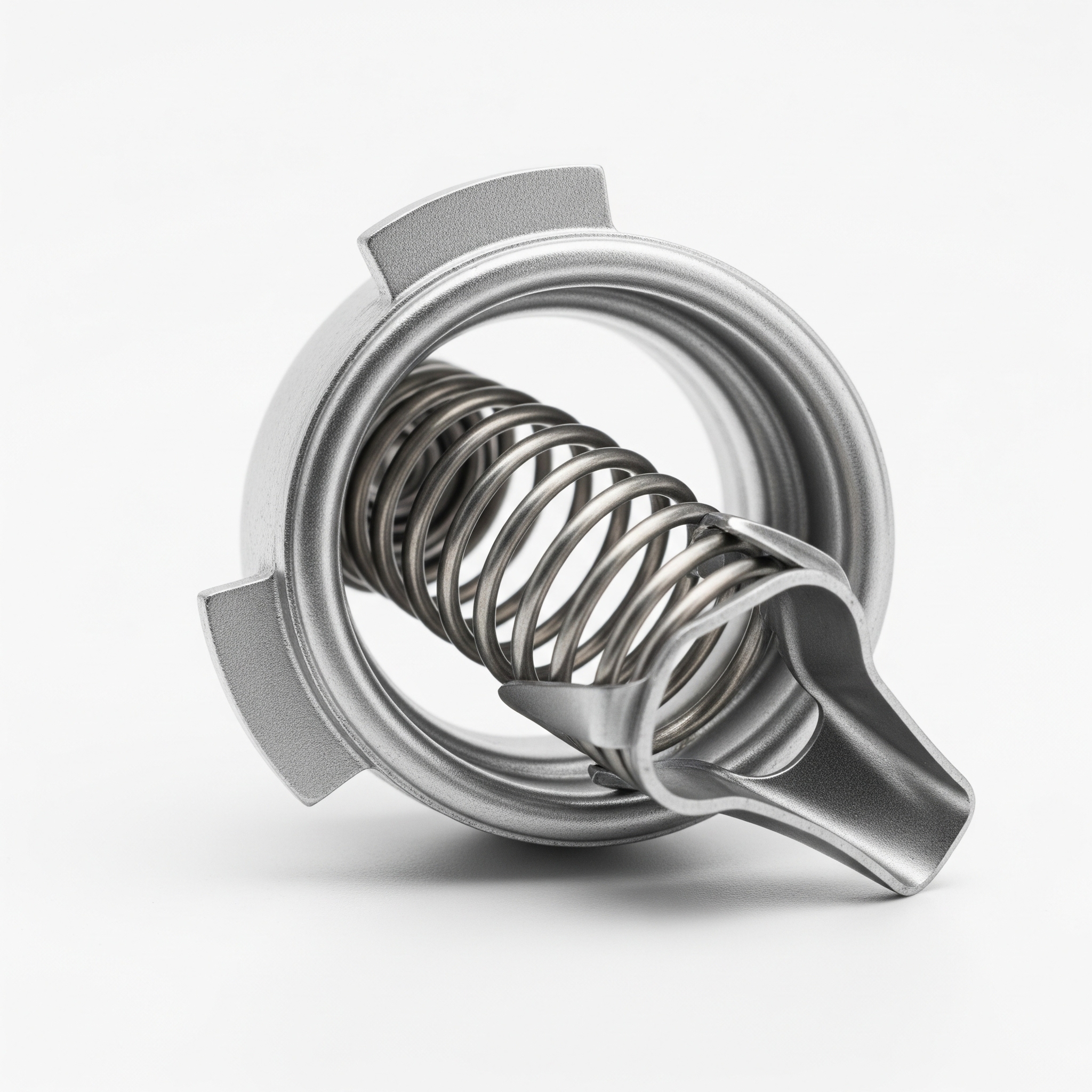
A small internal wire holds the basket tightly inside the frame. When you knock out the used grounds, it keeps the basket from falling out.
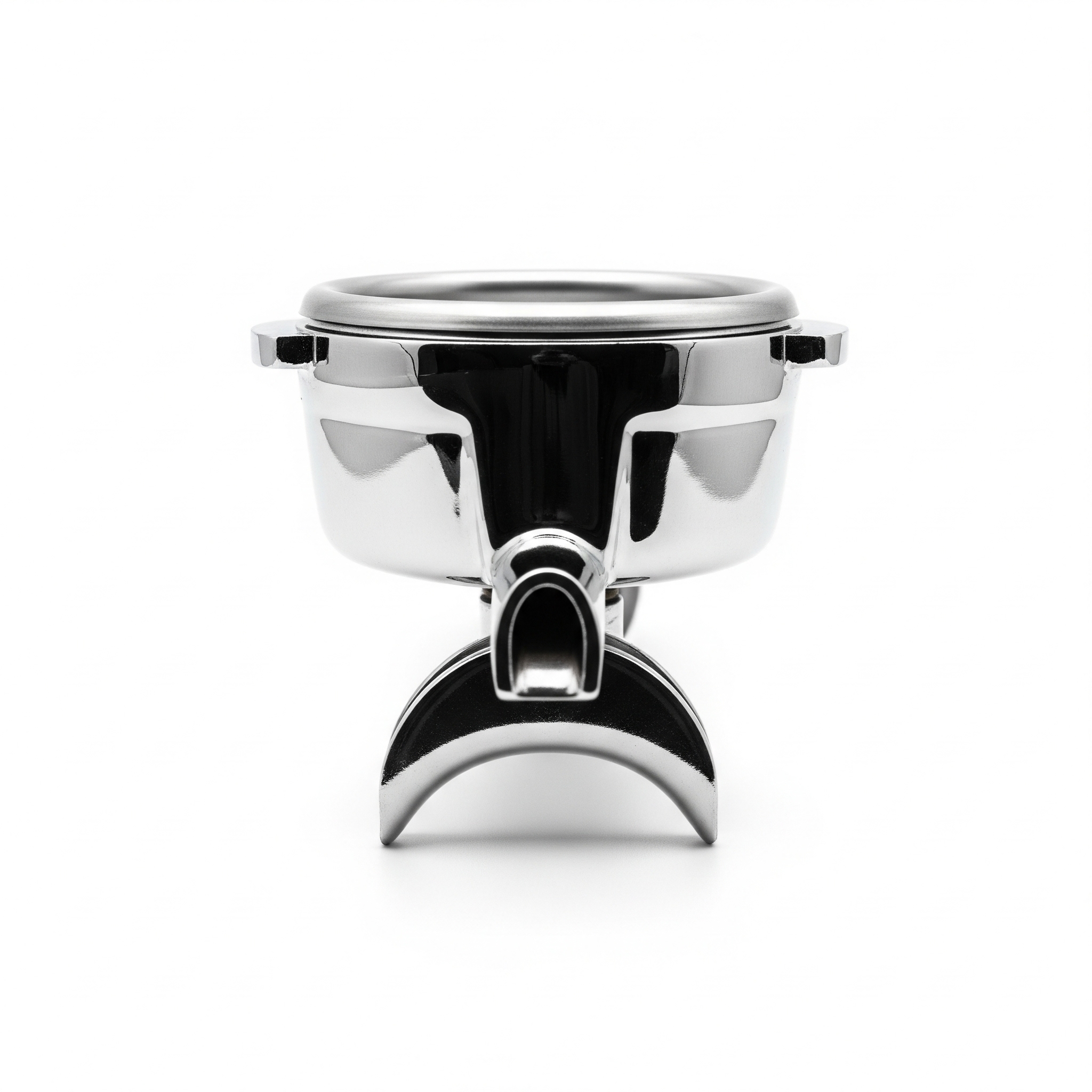
Many portafilters have one or two spouts at the bottom, directing espresso into one or two cups. Others are bottomless, exposing the basket directly for better visibility of the extraction.
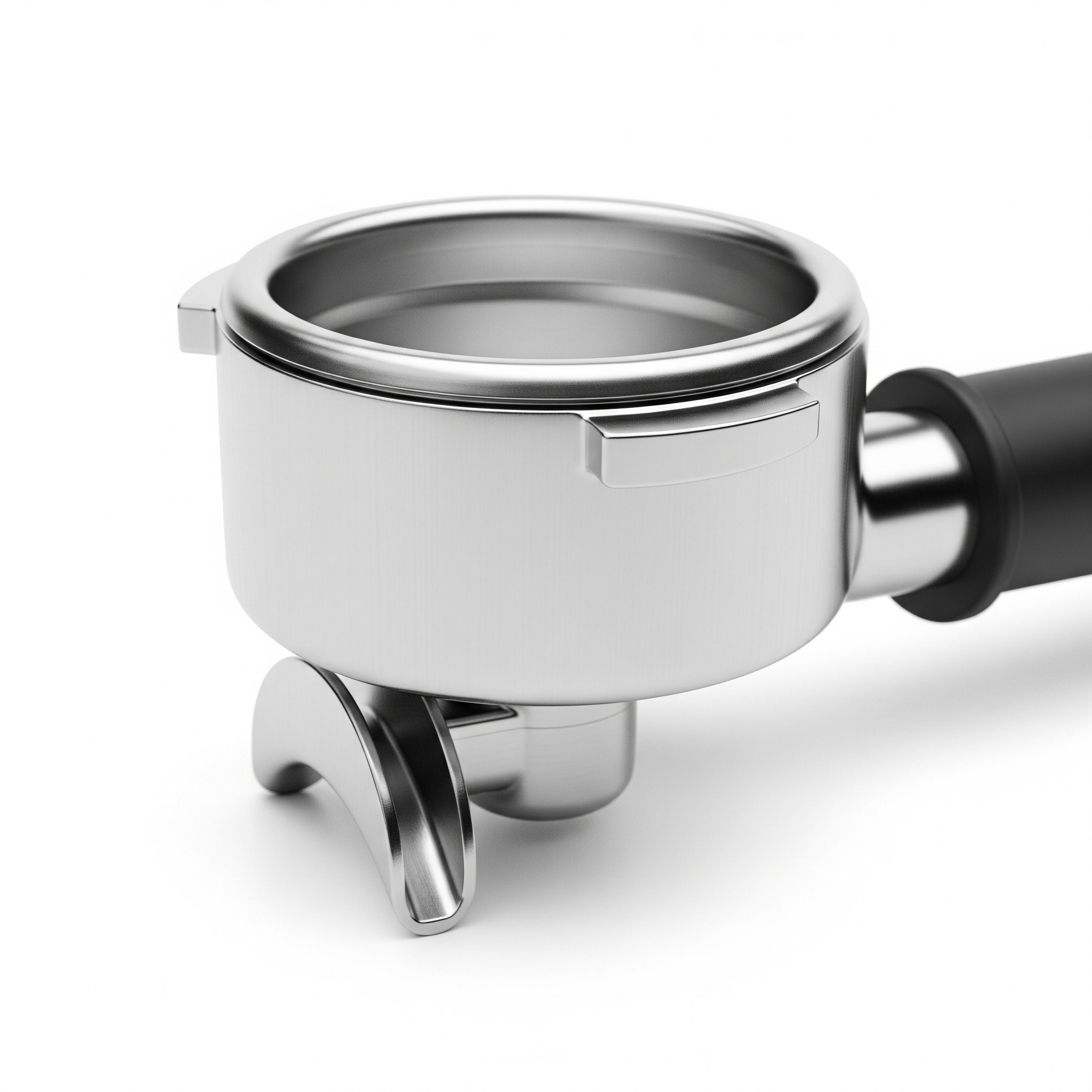
These small metal wings on the side lock the portafilter into the espresso machine’s group head. They are critical for securing a tight seal during brewing.
To find a portafilter that suits your needs, you don't have to search millions of websites to buy a single portafilter. Pro Coffee Gear is there to help you and filter out the ones according to your needs.
Portafilters don’t come in a one-size-fits-all model. From beginner-friendly designs to those built for precision, here's a breakdown of the most common types and how they differ.
Choosing the right portafilter isn’t just about size or material. Here's a look at the key types and what they bring to your setup.
A pressurized portafilter has two walls and usually one small hole at the bottom. This design builds internal pressure, which means even if your grind or tamp is uneven, it still produces crema. Typical diameters are 54 mm on home machines and 58 mm on higher-end setups. The included basket often holds around 8–12 g of coffee, enough for a basic single or light double shot. It's built-in pressure mechanism compensates for inconsistencies, making it ideal for beginners or those using pre-ground beans.
Also called the standard or commercial portafilter, this version has a single wall with hundreds of perforations at the bottom. It requires a precise grind, proper tamping, and a correct dose to build the right pressure and draw a quality shot. The typical diameter is 58 mm, though 54 mm is common in home setups. Baskets for these portafilters hold 14–20 g, with 18 g being a popular size among serious home baristas. The reward is greater control over extraction, leading to richer, more nuanced flavors.
This type is a non-pressurized portafilter with the bottom removed, exposing the basket. Standard sizes are 58 mm, with 54 mm versions available for home setups. Basket capacity matches the non-pressurized style, usually 14–20 g, depending on the basket design. The value of this portafilter lies in its visual feedback: baristas can immediately see flow patterns and address issues like channeling or uneven tamping on the spot.
The spouted portafilter is the common form used in most cafés, it’s simply a non-pressurized portafilter with one or two spouts that guide espresso into cups. It typically measures 58 mm (with 54 mm for some home models). Basket sizes vary, but most hold between 14–20 g. The spouts help maintain clean shots and are practical for high-volume environments.
Even with the right portafilter in hand, how you use it can make or break your espresso. Here’s where things often go wrong, and how to get it right, every time.
Here are the most typical mistakes baristas, whether at home or in cafés, make when using a portafilter, along with clear guidance on how to use it more effectively:
Many rush the process and dump coffee straight into the basket without leveling. This leads to channeling, when water flows unevenly through the puck, resulting in both sour and bitter notes.
Fix: After dosing, tap the portafilter gently or use a distribution tool (like a WDT or leveling tool) to level the grounds before tamping.
A tamp applied off-center or at an angle creates uneven density. This also leads to channeling. Tamping too lightly or too hard compounds the problem.
Fix: Place the portafilter on a flat surface, grip your tamper straight, and press evenly with consistent pressure (about 20–30 lb). Calibration tools or spring-loaded tampers help ensure consistency.
Also Read: Choosing a Good Coffee Grinder: A Simple Buying Guide
Knocking the tamper against the portafilter after tamping might feel satisfying, but it can disturb the puck and even dent the edge, leading to extraction issues.
Fix: Instead, use a finger or brush to remove stray grounds. Leave your tamp technique focused and stable.
Skipping to pull without flushing leaves stale, cool water in the shower screen. This initial water can cause under-extraction and dull flavors.
Fix: Always purge the group head for 1–2 seconds before locking in your portafilter.
Under- or overfilling the basket ruins shot balance. Too little coffee causes water to punch through quickly; too much results in over-extraction.
Fix: Stick to standard dosing, 14–18 g for doubles, and level again before tamping.
Pulling it out too soon after extraction risks creating suction that disturbs the puck and wastes ground.
Fix: Wait a few seconds after the shot finishes, then gently remove and knock out the puck.
Cold portafilters suck heat away during extraction, affecting temperature stability and taste.
Fix: When not pulling a shot, lock it back into the group head to keep it warm.
Of course, knowing the theory is only half the equation. Finding the right tools and setup for your specific needs is where Pro Coffee Gear helps you go from learning to mastering.
Many baristas, whether just starting or upgrading, run into the same challenge: knowing which portafilter fits their machine and brewing goals. They wonder, “Is it 54 mm or 58 mm? Pressurized? Where can I get a reliable replacement?” Pro Coffee Gear solves those doubts with tailored guidance, so you don’t have to second-guess compatibility or performance.
Compatibility support and sizing expertise: They help you confirm portafilter size (54 mm, 58 mm, etc.) and basket type before purchase, avoiding mismatches and machine warranty issues, saving you frustration and wasted money.
Customized component offerings: Choose from spouted, bottomless, or pressurized portafilters, plus precision baskets optimized for your machine; all backed by advice on what works best for home setups versus cafés.
Technical consultation included: Their team helps baristas troubleshoot specific issues, like channeling or puck density, suggesting targeted upgrades (e.g., precision baskets, tempered stainless handles) that align with your goals and workflow.
Quality replacement parts and accessories: From group-head gaskets to tailored portafilter handles, they stock reliable, industry-grade components, ensuring you get the right part the first time.
Peace of mind with service and warranty: All components are covered under their service plan, so you're supported if something wears out or malfunctions, with no surprise repair bills.
The portafilter controls more than just where the espresso lands. It defines how the entire shot is built. From basket type and size to how you prep and tamp, every detail directly affects consistency, pressure, and flavour. Once you understand how these parts work together, you’re not just brewing, but building repeatable quality into every cup.
At Pro Coffee Gear, we help you take that understanding further. We work with you to fine-tune your setup based on your actual brew data, whether it’s adjusting grind size, swapping baskets, or testing tamp pressure. Contact us and share your results with us, and we’ll guide you with practical tweaks, such as switching to a precision basket, refining with a WDT tool, or moving to a bottomless portafilter if your extractions show channeling.
If you're using pre-ground coffee or are still learning, a pressurized (dual-wall) portafilter helps mask technique errors while still producing crema. If you use a proper grinder and want full control over taste, a non-pressurized (single-wall) portafilter delivers better results.
Yes. Larger diameters (such as 58 mm) allow for more even water distribution and better puck integrity, resulting in more balanced shots. Smaller sizes work too, but may limit dosing and affect extraction consistency.
A bottomless portafilter allows you to visually inspect your shot, revealing issues such as channeling, uneven tamping, or dosing errors. It's a valuable tool for baristas to improve their technique.
Absolutely. Switching to a precision basket, bottomless portafilter, or even a better-handled version can improve consistency, flavor clarity, and control, especially when paired with a good grinder and proper tamping.